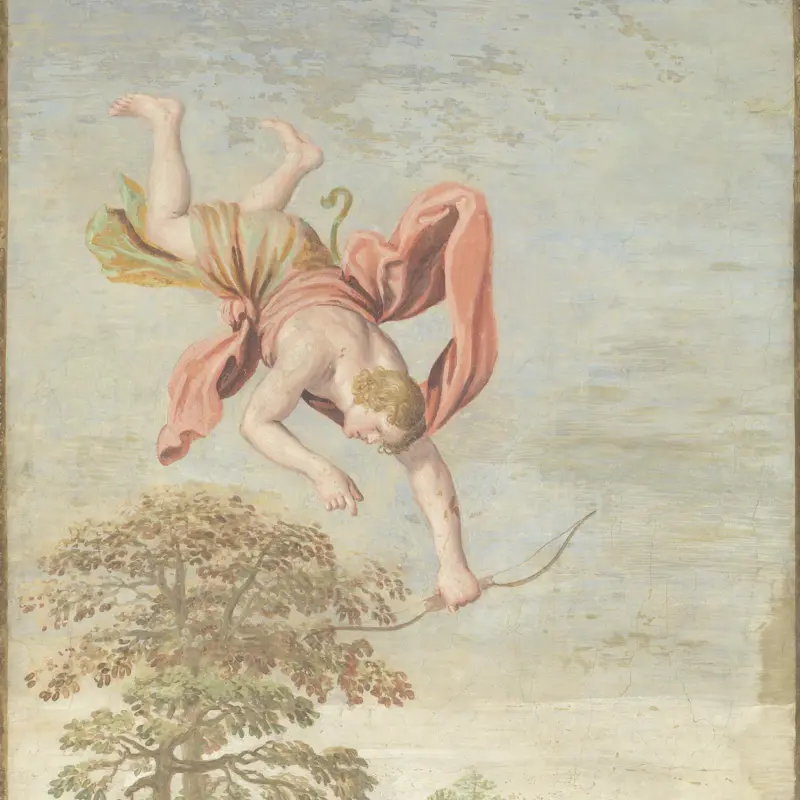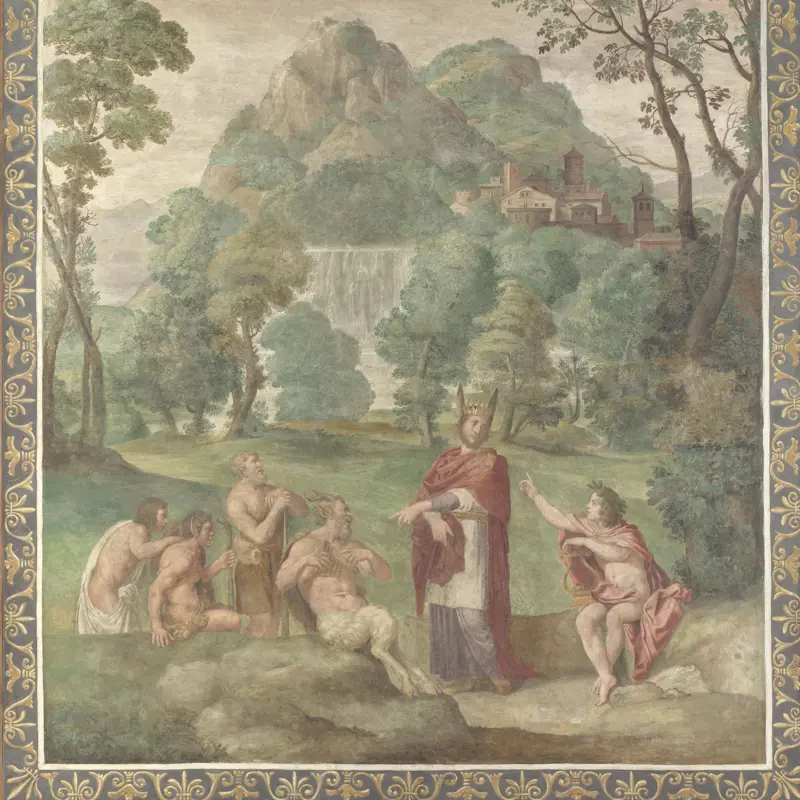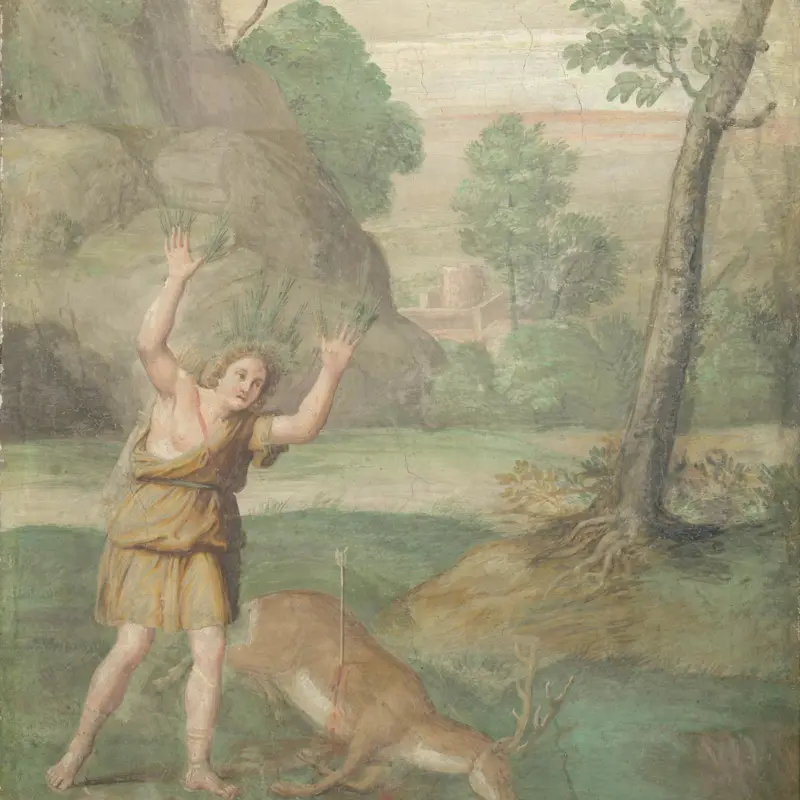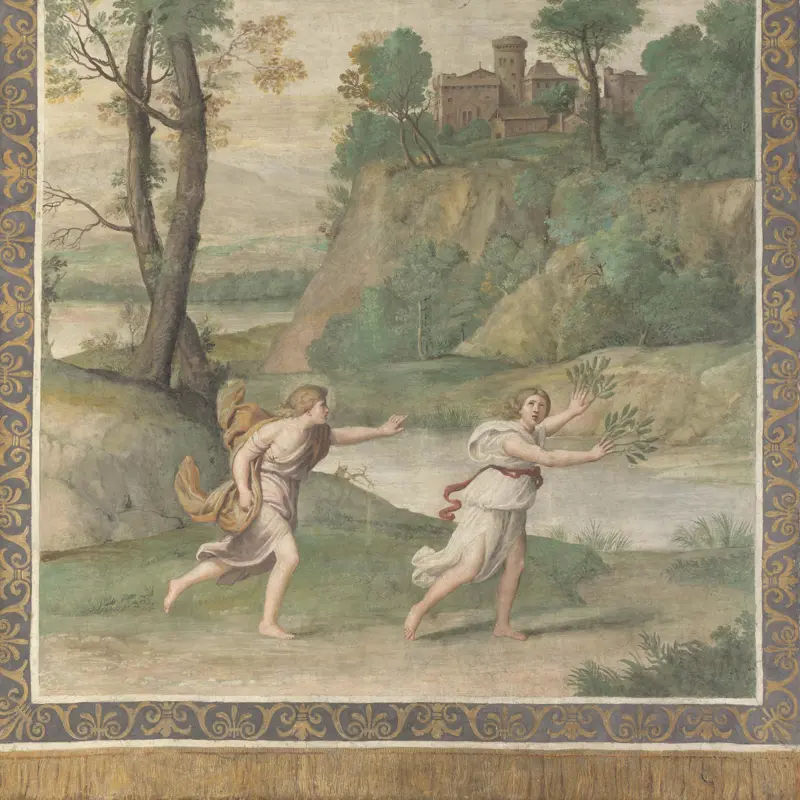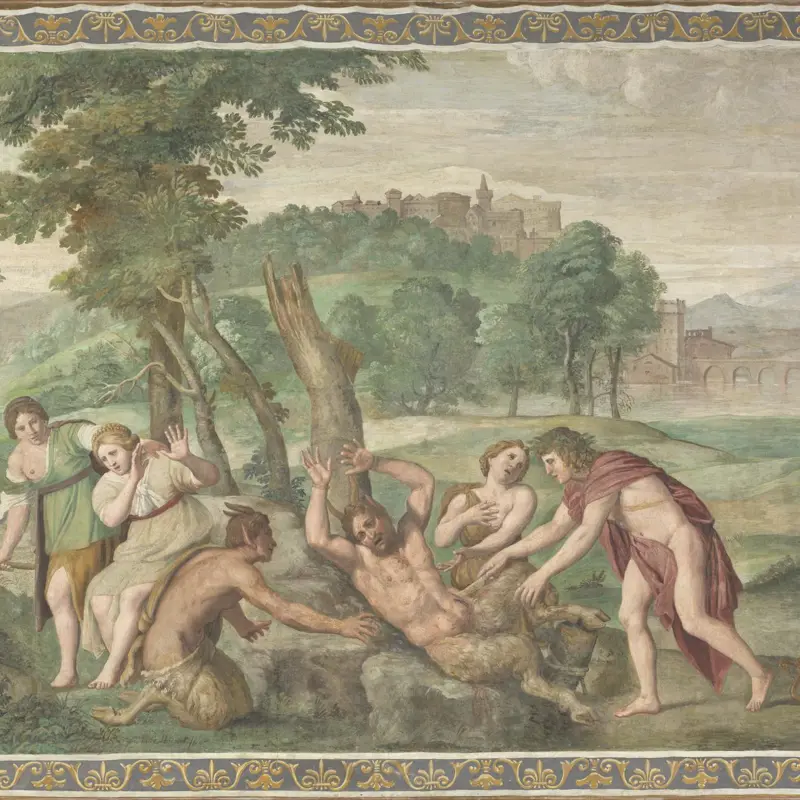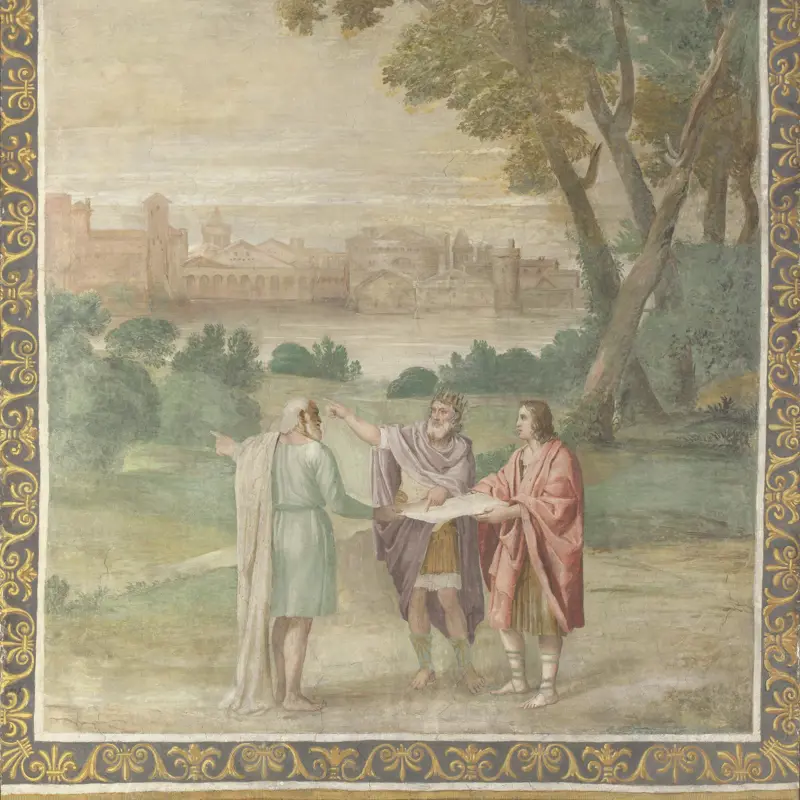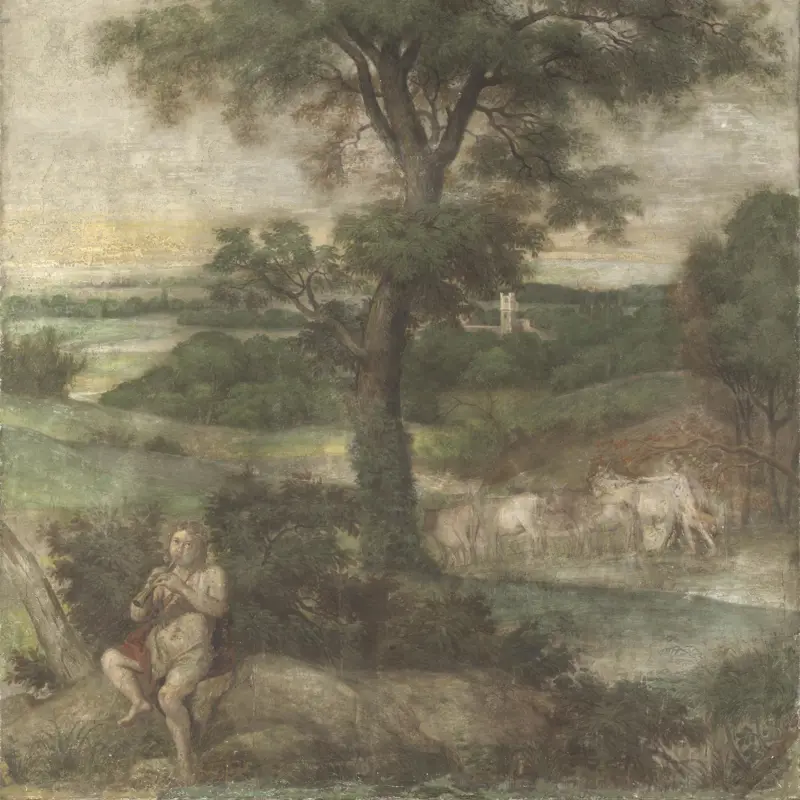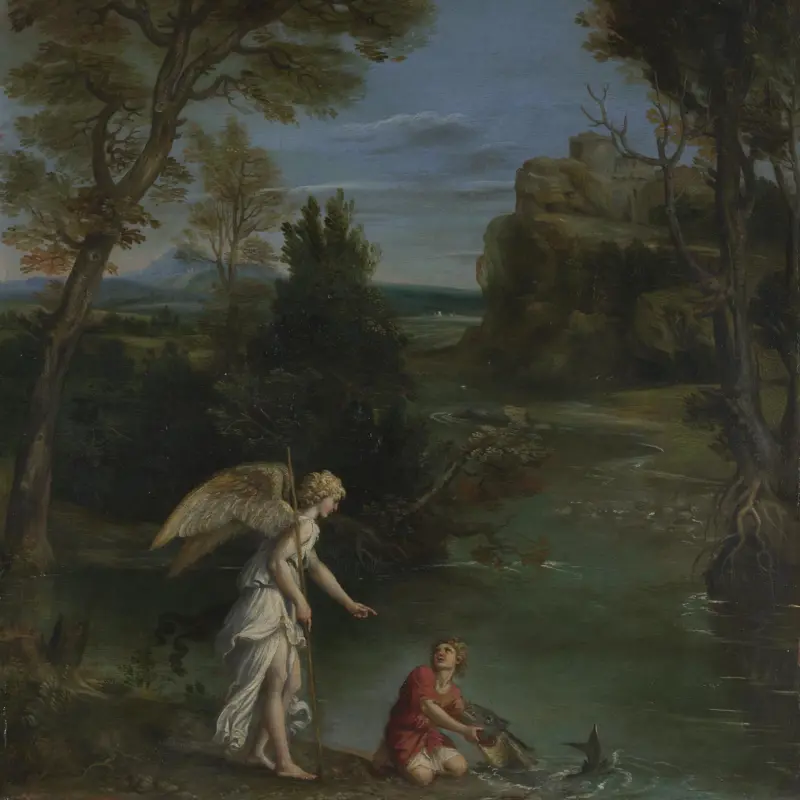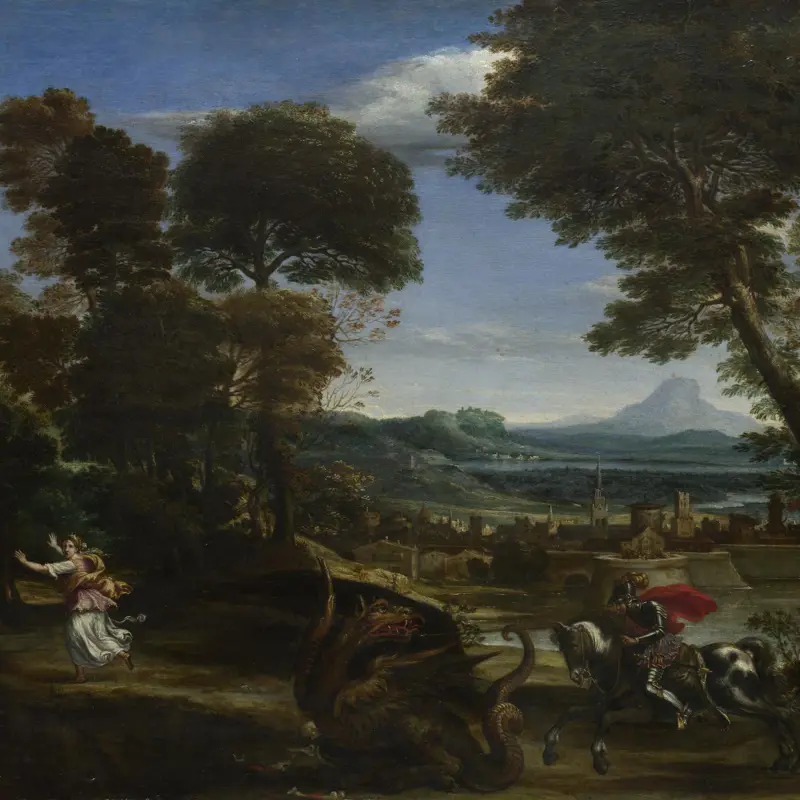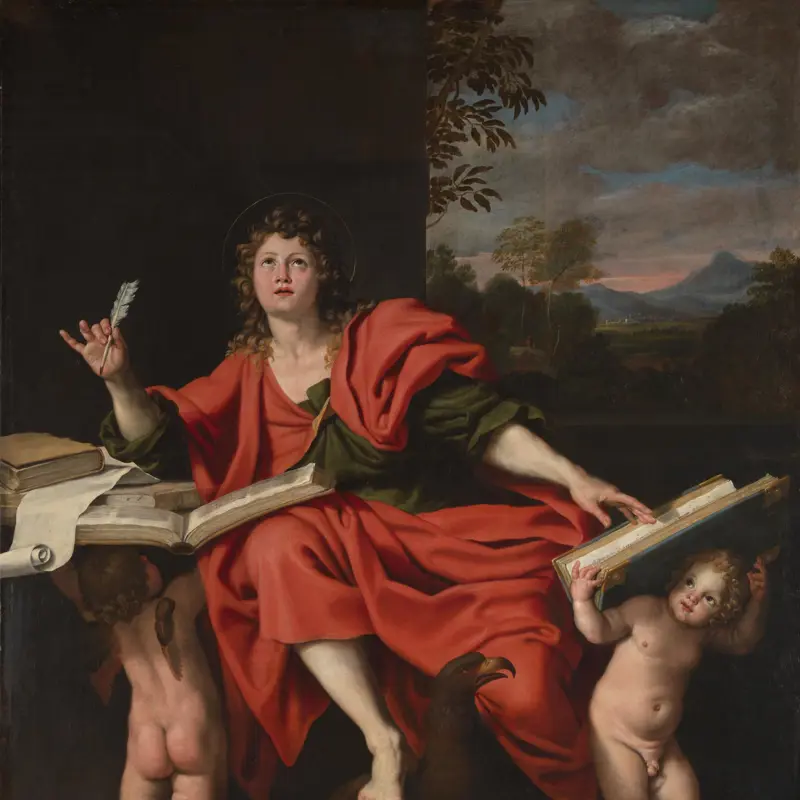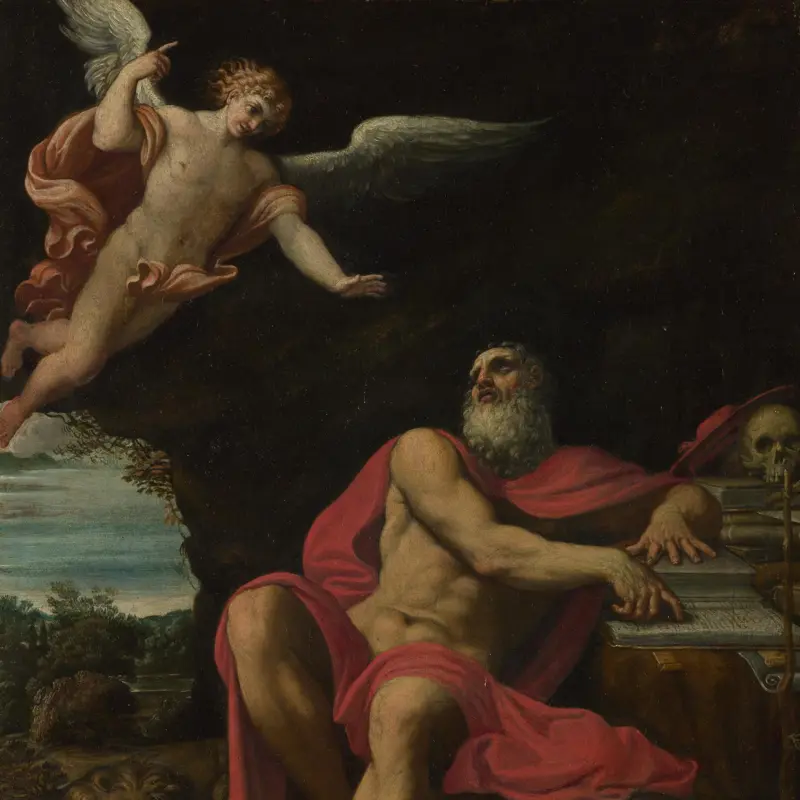Domenichino and assistants, 'Apollo pursuing Daphne', 1616-18
About the work
Overview
The sun god Apollo – identifiable by the golden rays around his head – pursues a young woman whose fingers are sprouting foliage. This is Daphne, a river nymph with whom the god has fallen in love. She rejects his advances and, rather than allowing him to catch her, is turned into a laurel tree.
This is one of ten frescoes which originally adorned the walls of a room known as the Stanza di Apollo in a garden pavilion at the Villa Aldobrandini in Frascati, near Rome. Eight of the frescoes were transferred to canvas and are now in our collection. All show stories of Apollo, mostly taken from the Roman poet Ovid’s Metamorphoses. Although Domenichino designed the scenes, much of the actual painting seems to have been left to assistants.
Key facts
Details
- Full title
- Apollo pursuing Daphne
- Artist
- Domenichino and assistants
- Artist dates
- 1581 - 1641
- Part of the series
- Villa Aldobrandini Frescoes
- Date made
- 1616-18
- Medium and support
- Fresco, transferred to canvas
- Dimensions
- 311.8 × 189.2 cm
- Acquisition credit
- Bought, 1958
- Inventory number
- NG6287
- Location
- Not on display
- Collection
- Main Collection
Provenance
Additional information
Text extracted from the ‘Provenance’ section of the catalogue entry in Michael Levey, ‘National Gallery Catalogues: The Seventeenth and Eighteenth Century Italian Schools’, London 1986; for further information, see the full catalogue entry.
Bibliography
-
1965The National Gallery, The National Gallery: June 1962 - December 1964, London 1965
-
1986Levey, Michael, National Gallery Catalogues: The Seventeenth and Eighteenth Century Italian Schools, London 1986
-
2001
C. Baker and T. Henry, The National Gallery: Complete Illustrated Catalogue, London 2001
About this record
If you know more about this work or have spotted an error, please contact us. Please note that exhibition histories are listed from 2009 onwards. Bibliographies may not be complete; more comprehensive information is available in the National Gallery Library.
Images
About the series: Villa Aldobrandini Frescoes
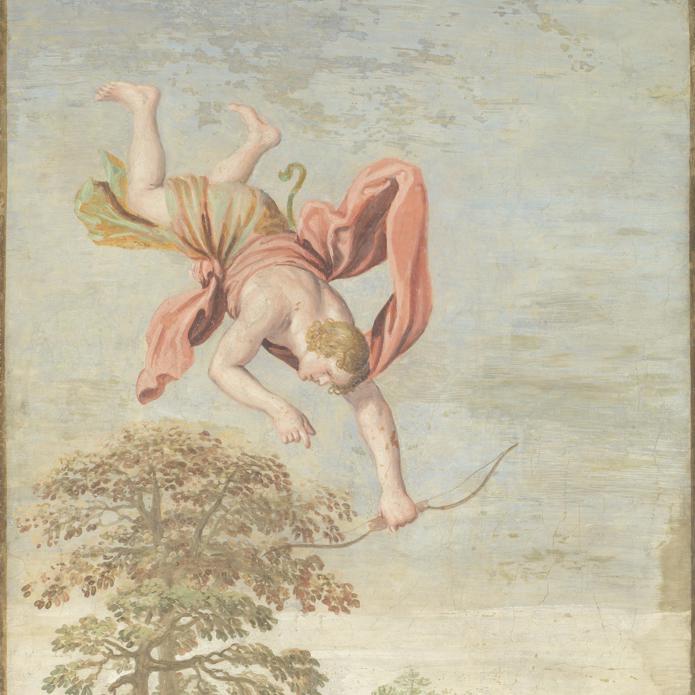
Overview
These large frescoes (now transferred to canvas) once decorated the walls of a spectacular pavilion in one of the great Italian Baroque gardens.
The Villa Aldobrandini in Frascati was rebuilt by Cardinal Pietro Aldobrandini, nephew of Pope Clement VIII, in the early years of the seventeenth century. Immediately behind the palace, he built a large classical pavilion and decorated it with fountains, statues and paintings. Domenichino’s frescoes – two of which remain in situ – were arranged around a room called the Stanza di Apollo, which also contained a musical fountain representing Mount Parnassus, the mythical home of the Greek sun god Apollo and the Muses. Based on themes drawn from the Greek myths, the iconographical programme glorified the triumph of the Catholic Church, and the role of the Aldobrandini family in it, emphasising the superiority of the intellect over the emotions.
Although Domenichino designed the pictures, much of the actual painting was done by assistants.

